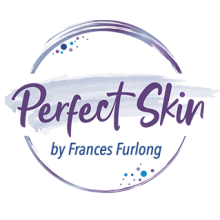This month’s focus is on treating scars to the face and body, not only do they cause great distress to those suffering with these conditions they can affect a person’s self esteem greatly. They can be caused by traumatic injury to the body, as a result of acne or other inflammatory skin disorders, due to stretch marks because of increased weight gain or pregnancy. As an experienced Aesthetic Nurse Specialist I get so much satisfaction combining my medical knowledge with my artistic flair for helping to transform a problem area on the body or face. The changes that can be achieved can be incredible for a person’s confidence and I am privileged to be able to help. Please see this month’s full page advert to see a client testimonial and before and after photos.
What is a scar?
A scar can be defined as a mark on the skin after a wound or an injury to the surface of the skin. Scars can occur inside and outside the body, from surgical procedures to acne and chicken pox trauma. When our skin becomes wounded and a break occurs in the body’s tissue, the body then produces a protein called collagen as part of the natural healing process. For up to three month’s post trauma new collagen continues to form, blood supply increases to the area. Therefore the scar may look raised, lumpy or red, following the three month recovery the collagen stops forming and the blood supply reduces and the scar will gradually smooth out and look paler. When we are younger we heal quicker and as part of the ageing process it takes us longer to heal, also some medical conditions such as diabetes and vitamin deficiency can affect our rate and efficiency to heal.
Types of Scars
The different types of scars include:
Flat, pale scars – these are the most common type of scar and are due to the body’s natural
healing process. Initially, they may be red or dark and raised after the wound has healed, but will become paler and flatter naturally over time. This can take up to two years.
Top tip – speed up the process by using Intense Pulsed Light therapy and use serums which
contain stem cells and colostrum.
Hypertrophic scars – red, raised scars that form along a wound and can remain this way for a number of years.
Top tip – help soften and flatten scars using microdermabrasion or AHA based treatments or
products. Also hydrocortisone injections.
Keloid Scars
These are caused by an excess of scar tissue produced at the site of the wound, where the scar grows beyond the boundaries of the original wound, even after it has healed.
Top tip – excellent results can be achieved with derma pen and laser treatments and
hydrocortisone injections when they initially form can help soften them.
Pitted (atrophic or “ice-pick”) scars – these have a sunken appearance.
Top tip – hyaluronic acid droplets placed into the dermis of the skin in conjunction with dermal roller or derma pen treatments can improve scarring greatly.
Depending on the type and age of a scar, a variety of different treatments may help make them less visible and improve their appearance. Cosmetic camouflage makeup can be a useful tool and of course surgical procedures can help repair.
Emotional Effects of Scarring
Scarring, particularly when it is on the face, can be very distressing, especially if you feel you are being stared at. If you avoid meeting people as a result of your appearance, you may become
socially isolated. This can lead to feelings of depression.
If you feel that your scars are making you depressed or affecting your daily activities, make sure you visit your GP as you should not suffer in silence.
Preventing or Improving Scars
It isn’t possible to prevent scars from forming, but there are things you can do to help your scar be less visible and heal better, such as immediately cleaning dirt, objects and dead tissue from wounds.
Other ways to improve scarring include:
not scratching or picking at scabs and spo
